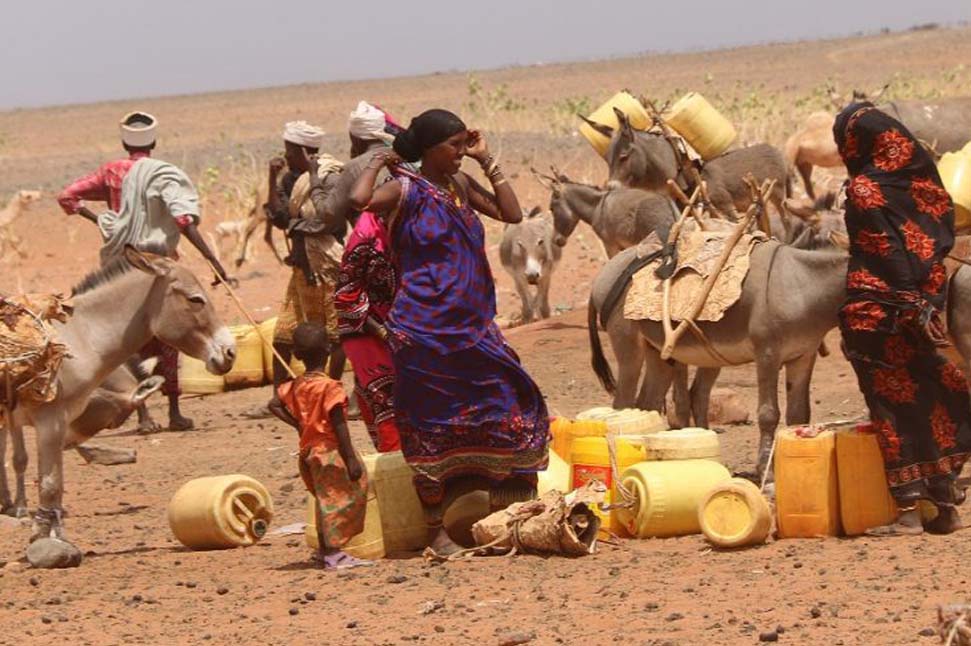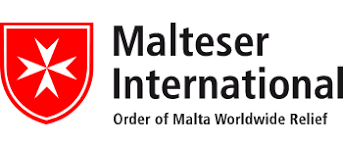With their limited food stocks from 2018 harvest already depleted and temperatures soaring up to 40 Degrees Celsius during the day, there is an urgent need for food to regain energy and clean water to cushion the dire effects of dehydration,” says Adhe Wario, Programme Director for Pastoralist Community Initiative and Development Assistance (PACIDA) in Kenya.
In Yaa Galbo, one of the zones that has been hardest hit by the drought, hundreds of households are surviving on one meal a day. Women and children are trekking over 20kms every day in search of water. An estimated 400 families are in need of emergency assistance. In Namarei, Laisamis Sub-county, people have resigned to drinking contaminated water from an outdated water pan which is also shared with livestock heightening the risks of spreading of water-borne diseases like cholera and dysentery. “In the past, we used to ave some food reserves that kept us going during the dry spells, but this year we have no food stocks, our barns are empty. We are at risk just like our livestock. There are no projects in this area after some NGOs ended their construction work last year. We are only surviving on prayers,” Lokomoru, a woman from Funan Kambi village, told PACIDA staff on the ground. Goats, sheep, cows and camels are succumbing daily to the worsening drought situation in Marsabit county of Kenya at an alarming rate. The drought crisis is replicated across the four sub-counties of Marsabit County namely Saku, Laisamis, Moyale and North Horr.
PACIDA and other development and humanitarian organisations have been working around the clock since Friday 8th March, when alarming reports of drought were first received, to assess the needs of people affected by the drought. Whilst the focus today is on immediate response, emergency preparedness is also critical. “We fear that the current drought is just an early warning of what will come during the coming months. Despite assurances from the meteorological department that rains will eventually come, it is likely that the rains will come too late when drought will have taken its toll on humans and livestock,” said Wario of PACIDA. “We must deploy emergency response and reach all the corners of Marsabit County as soon as possible. As a country, we must be better able to respond to natural hazards, delays and lack of coordination only puts lives at risk,” he added. Outside of Marsabit county, the situation is not any better, hundred thousands more people have been affected by drought in the nearby counties of Turkana, Isiolo and Mandera. The impact of changing climate conditions, on top of inter-tribal and resource-based conflict, is deeply affecting the people of northern Kenya. Inter-communal resource-based conflicts in the agro-pastoral, and pastoral livelihood zones are likely to increase due to dwindling pasture, browse and water. “We’re likely to see more and more of these extreme weather conditions in northern and eastern Kenya, and it is often those who are already among the most vulnerable who are hit the hardest,” said Wario.
A brief by Government of Kenya issued on 15 March 2019 indicates that nation-wide the below-average short rains have increased the food insecure population from 655,800 in August 2018 to 1,111,500, with the top 12 counties having a total of 865,300 food insecure people. Marsabit County is considered a water scarce county with most of the parts often experiencing extreme water shortage during periodic dry spells and erratic rainfall patterns. Movement of population to areas with water sources puts significant pressure on limited available water supplies trying to match the needs of people. Lack of water is the largest constraint to sustainable livelihoods in many parts of the county.







